- Administrator
- Albums and Singles
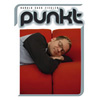 The collection of obscure older tracks from this Cologne-sceneüber-collaborator replaces a legacy of pastoral ambience and blessed outelectronica with the exuberances of a bedroom pop star, leaving me feeling abit punkt.
The collection of obscure older tracks from this Cologne-sceneüber-collaborator replaces a legacy of pastoral ambience and blessed outelectronica with the exuberances of a bedroom pop star, leaving me feeling abit punkt.
The title says it all. Point, spot, period, German play on words, or English slang, it fitseach way. Every song on here references pointed,popular punk ideology and stylization, and every one makes me feel like I’vebeen tricked into listening.
Sold as acollection of Ziegler’s “greatest hits,” Punktactually compiles the artist’s earliest releases, most of them basement issuecassettes that probably go back to his youth. Having known Ziegler only from his work with Sack und Blumm, Mouse onMars, and as a figurehead in the A-musik scene, I feel mislead by thepresentation of this record: I want timelessnaïve pop ambient; I want the ancient bedroom tapes with Ziegler mixing streetnoise and naked harmonium drones for the first time; I want the childhoodinspirations for Sack und Blumm’s toy world. I do not want songs like “Barbie & Ken” and “Teenage Lover,”sounding like Royal Trux 20 years back with no drugs, no “singing” voice, andraised on German television.
Punkt is 22 lo-fi punkish pop tunesexecuted by a one-man-band with a predictably keen melodic sense and the necessaryexuberance; it’s just not close to the Zeigler I know and that’s disappointing. Staubgold’s last release of this nature, acollection from faceless German pop recluse Die Welttraumforscher, was a brilliant and literal borrowing from FelixKubin’s (Gagarin Records’) back-catalog, as well as a successful fusion of theunknown, always quirky German pop landscape and the contemporary electronicscene peopled by the likes of Barbara Morgenstern, Mouse on Mars, etc. Punktmight’ve benefited similarly, from an extra disc of remixes, or even aredux by Ziegler alone. As it is, thesesongs are inspiring and revolting in equal and simultaneous doses; nowhere isthe otherworldlyness or the subtle nostalgic currents touching ‘Sack’’ssubsequent work. Here is the playfulpunker kid in everyone, only it might be more engaging if it were just anyone.
samples:
Read More
- Administrator
- Albums and Singles
 Slowly, and without a lot of fanfare, the members of this ever-changingand evolving collective have become the world's first full-scalecarnival band without a carnival to play. Instead, life is theircarnival, and they a group of minstrels that record their reactions tothe happenings around them, natural and unnatural, without sparing thelistener anything.
Slowly, and without a lot of fanfare, the members of this ever-changingand evolving collective have become the world's first full-scalecarnival band without a carnival to play. Instead, life is theircarnival, and they a group of minstrels that record their reactions tothe happenings around them, natural and unnatural, without sparing thelistener anything. North East Indie
Their fondness for the dramatic and themusical exploration that has been so prevalent on recent releases findsits crest on their latest full-length, an openly political and vibrantalbum, equal parts puck doom and clown glee. The track thatexemplifies this energy is "Pie for the President," which starts as aChaka Khan beatbox, then a harlot's choir comes in singing of sausages,turkey tongues, and mass appeal. Suddenly, a cacaphonous orgasminterrupts the proceedings, then a solid three-part chorus of "why whowhen" begins, returning things to a certain normalcy. The songjust frolicks along then before dissolving into cabaret strangenessabout a "backwards brain" and how "everyone dies and it's all alie." The interesting part is that the song goes through so manychanges and is just over three and a half minutes. Stretch thatconcept to ten minutes plus, and the bulk of the record isrevealed.
Sharp-voiced choruses, chill-bearing bass, oddinstrumentation, Vincent Price-esque monologues and theatrics abound,all with the varied messages direct and indirect about the state of thenation and the world at large. The band has taken to spellingtheir home country as "U$A" on their website, and the sentiment is notlost in this collection. "The Ghosts are Greedy" flat out saysit: "we must escape the government, with powdered wigs and wetcement." The heartbeat of the album is this free verse speakingfor a non-free populace, on "murdering ego," "taking out thepassengers... and hunt down my enemies," and how "surely, reality, youare not quite what you used to be."
Rarely has the band expressedthese feelings through their own unique voice, and it's jarring in itsfrank emotional pitch. The songs work their way into the psyche,the message takes hold, and suddenly a whole new meaning isachieved. A wonder this is to behold; and those that should hearit would never listen in the first place. They're not listeningat all.
samples:
Read More
- Administrator
- Albums and Singles
 He goes by the name Lucifer and he makes a noise that'll stand outamong every other noise album in just about anyone's collection.Throbbing Gristle was as much concerned with beats as they were withconfrontation and the Noise/Girl project takes that premise a stepforward.
He goes by the name Lucifer and he makes a noise that'll stand outamong every other noise album in just about anyone's collection.Throbbing Gristle was as much concerned with beats as they were withconfrontation and the Noise/Girl project takes that premise a stepforward.
Killer Pimp
This is noise for dancing, at least in part, and it's noisethat loves chaos in a way that only Satan possibly could. Lucifer'snoise is part drone, a layered, demented noise full of psychedeliceffects and hazy textures all of which tend to reach a criticalvelocity before ending. His dance tracks, on the other hand, are justthat. It's impossible to resist his dance floor oriented beats,pounding away like a war drum beneath sharp, swirling effects and heavystatic.
When "Discopathology" hits it's a bit of a surprise. Luciferdoesn't hold back, utilizing compressed melodies, unintelligible vocalsamples, and all manner of cut-up blast rhythms that build and build toan orgasmic level, pumping like a well-oiled machine. It's hard not tothink of Nitzer Ebb or any of the dance-industrial giants that madesimilar, but significantly less energetic music than this. It's alsohard not to imagine a factory with innumerable gears, gaskets, engines,and cranks moving in perfect time.
The first half of the album isprodigiously funkier and voluptuous. "Alive" amounts to the completedestruction of the Bee Gees, a sacrificial burning of their trademarkvocals and disco style. A tense reworking of the melody from "Stayin'Alive" is countered by Lucifer's start and stop dynamics. It's anaudacious track, especially on a noise album like this one. It mightturn a lot of purists off, but it adds a world of dimension to thealbum, one that is altogether harsh and uncompromising. As the albumcomes to a close, Lucifer turns the darkness factor up about tennotches, increasing the intensity of his feedback blasts ormanipulating the mood of the entire track by incorporating deepergroans and hinting at rhythms somewhere in the distance.
Trevor Brown'sfantastic artwork fits the mood of the album perfectly. The nurse withher open legs might suggest some kind of welcome gesture, but it'd bethe most insane kind of sexual adventure. Lucifer similarly opensthis album up for the noise uninitiated and then proceeds to crusheveryone and everything sucked in by his whirling mania of dancing feetand chainsaws.
samples:
Read More
- Administrator
- Albums and Singles
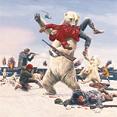 I’ve never been to the Midwest, but based on the bands that come out ofthat whole scene, I have to imagine it to be a pretty fucked up place.Stnnng(pronounced “stunning”) call Minneapolis their home and they can’t helpbut be a reflection of a geographical area known better for itsoppressive winters and amazing ability to be flat than its contributionto society.
I’ve never been to the Midwest, but based on the bands that come out ofthat whole scene, I have to imagine it to be a pretty fucked up place.Stnnng(pronounced “stunning”) call Minneapolis their home and they can’t helpbut be a reflection of a geographical area known better for itsoppressive winters and amazing ability to be flat than its contributionto society.Modern Radio
The reference points on the band’s debut are like a map that cut aclear trail to the front doors of Touch & Go, circa 1993. Theguitars sputter and spew, pissed as shit and itching for a fight. On arecord like this, it’s the drums that keep everything and everyone fromgoing overboard, and while drummer J. Michael Ward isn’t rewriting thebook, he does a good job of keeping the band from becoming an uttermess. Lyrically, Chris Besinger infuses his antagonistic cut and pastelyrics with two parts bile and one part cynical sneer.
A Cum Laudegraduate of The E. Smith & Albini School of Fucked Up Songwriting,Besinger’s lyrics read like the schizophrenic musings of a conspiracytheorist with a serious self-image problem. On standout “Ready theReplicas” he muses over spring coiled arpeggios and flashes of cleantone guitar strumming that “highly caffeinated acid heads havecommandeered the bathrooms on every floor” before the rioters outsiderush in to presumably burn the fucker down. While the song’s sci-fitale gone awry may seem cliché, it gives a clear indication of themusicianship of guitarists Adam Burt and Nathan Nelson and bassistJesse Kwakenat. Though “New National Anthem” does contain one gem of aline, “we sing for panty-sniffers, and the grossly overweight. Aren’tyou proud to be an American?,” it puts itself through one too many timechanges and verses. Perhaps due to the brevity of the rest of thealbum, “New National Anthem,” with its four minute running time, seemslike a marathon.
While the songs on Dignified Sissy seem ready to fallapart at any one second, that’s part of the fun. Stnnng bring nothingnew to the table, but in many ways that’s just fine. Dignified Sissyrocks out in ways that a lot of other albums won’t rock out in 2005.
samples:
Read More
- Administrator
- Albums and Singles
 Just when I'd almost completely forgotten about Tactile, John Everallchimes in with another well-timed collection of abstract electronicevocations of interior emotional landscapes.
Just when I'd almost completely forgotten about Tactile, John Everallchimes in with another well-timed collection of abstract electronicevocations of interior emotional landscapes. Elseproduct
This new release comesalong during a small flurry of renewed interest the so-called"Isolationist" sound of 80s/90s dark ambient electronics, of whichTactile was reportedly a key constituent. Although I must say here thatI've never quite had a grasp on what exactly was meant by the critics'coinage of Isolationism, or what exactly it was supposed to entail. Andit further seems oddly antithetical to group together works that aresuggestive of isolation and alienation.
The album's release also comes quite close to the one-year anniversaryof the death of Coil's Jhonn Balance, to whom this album is dedicated. Bipolar Explorer wasoriginally slated for release on Coil's Eskaton imprint, but due towhat is explained as the artist's "chaotic mental state," it wasdelayed several years and now appears on Elseproduct. As the album'stitle suggests, this work is nourished by a state of innerpsychological sickness, a frigid inner landscape illuminated by harshindustrial tubes of humming fluorescence, populated by the buzzing,scraping circuitry of dread. As one might expect from the artist whocreated such bleak, color-desaturated audio realms as those of Inscape and Borderlands, the sounds on Bipolar Explorer lean heavily on the depressive, and not so much on the manic side of things.
Throughout the album, the listener is confronted with shrill andagitating electronic pulses that often seem utterly detached from anysort of recognizable humanity, coldly passing with seeming randomnessthrough a series of indifferent relays that trip, buzz and spark withan energy that could only metaphorically be referred to as "life."Rhythms do appear, some beyond the accidental rhythms of alternatingcurrent, but they are alien repetitions defined by the kind ofdepersonalized routines of the assembly line, and certainly nothingthat could be called a beat. There are textures and atmospheressuggestive of specific physical spaces on tracks like "PeriodicUnstable" and "Watching the Spiders," perhaps the abandoned undergroundtunnels or warehouses of Everall's native Manchester, but more likelyan idiosyncratic inner-astral-space of oxidized, blasted-out furnacesand smog-stained, damp metal corridors. If Bipolar Explorercontributes anything to my understanding of these emotional imbalances,it is just how all-encompassing and corrosive they can be to one'ssanity.
Ultimately, I had a hard time listening to Bipolar Explorer allthe way through, as it put me in a very dark and claustrophobic place.Though I've never experienced bipolar disorder, I have suffered fromintermittent cluster headaches and migraines for most of my life, andthere were several moments (especially on the album's title track) thatfelt like tangible sonic evocations of that blindingly familiar pain,with waves of acrid smells of battery acid, burnt hair and thesickly-sweet chemical smell of a fresh batch of crystal meth, alongwith that sense of frenzied elation and creeping paranoia that directlyfollows its injection. Assuming that this discomfort and agitation weredeliberate on the part of the artist, this album is chillinglyeffective.
samples:
Read More
- Administrator
- Albums and Singles
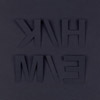 This brief EP from Larsen contains four new tracks from their upcomingalbum, two which have been remixed by other artists, and two whichappear in nascent form, and will be subject to additional mixing byLustmord before they appear on the album proper. By its very nature,it's a pretty superfluous stopgap, and doesn't share the engrossing,complex moods of Larsen's full-length albums.
This brief EP from Larsen contains four new tracks from their upcomingalbum, two which have been remixed by other artists, and two whichappear in nascent form, and will be subject to additional mixing byLustmord before they appear on the album proper. By its very nature,it's a pretty superfluous stopgap, and doesn't share the engrossing,complex moods of Larsen's full-length albums.
Important
There are a few moments, however, on HMKE that are veryinteresting, and seem to indicate a slightly new trajectory for Larsen,as the group moves away from the crisp virtuosic instrumental interplayof previous efforts, into rather more nebulous territories. Instead ofthe usual guitars, drums, keyboards and digital elements each playingtheir own distinct role in the moody chamber rock, tracks like "M" and"K" seem purposely to form a muddy admixture, an undifferentiatedtangle of sound that, at times, all but buries its constituent layersin sheets of reverb and electronic drone. Although Larsen continue thestrategy of naming tracks after single letters of the Latin alphabet,the tracks here don't share the same sense of crystalline Goblin-esquegroup dynamics of Play, instead aiming for the grandiose, droning splendor of groups like Godspeed or Kinski.
The choice of remixers seems to confirm this new emphasis onelectronic drone textures. Deathprod, the Norwegian electronic artistwho works wonders both with his own project and as part of Supersilent,contributes a three-minute reworking of "H" which even furtherobfuscates each player's identity into a thick, reverberating funnel oforchestral noise. Origami Galaktika's extended remix is unique forthe way it isolates Julia Kent's lovely cello playing, placing itadrift amidst a whirlpool of circulating symphonics. However, it goeson for far too long with far too little development, which is just whatI though about OG after seeing them open up for The Legendary Pink Dotsa few years ago. All things considered, this EP bodes well for Larsen'sforthcoming album.
samples:
Read More
- Administrator
- Albums and Singles
 Thanks in no small regard to the efforts of high profile DJs like Richie Hawtin, whose DE9mix CDs in particular have served as accessible benchmarks for thesubgenre, minimal techno and its incestuous electronic variantscontinue to enjoy the freedoms of expression and progression whilemaintaining an audience.
Thanks in no small regard to the efforts of high profile DJs like Richie Hawtin, whose DE9mix CDs in particular have served as accessible benchmarks for thesubgenre, minimal techno and its incestuous electronic variantscontinue to enjoy the freedoms of expression and progression whilemaintaining an audience. While some of the producers previouslycomposing this sound have moved on to radically different terrain (see:Rhythm & Sound), several artists like Donnacha Costello, VladislavDelay, and Tomas Jirku have stayed the course while pushing boundaries.Here, the latter gent pairs up with Robin Judge, another Mille Plateauxrefugee and Traum cohort, for a loosely thematic album that looks both wayswhile crossing the street, reverently in the direction of the past andthoughtfully towards the future.
The respective and respectable back catalogs of Jirku and Judgedemonstrate a history of experimentation in sound design and anunderstanding of the dancefloor, and the tracks presented here clearlyrepresents their combined craftsmanship. "Double Trouble" splicescrude, almost ancient-sounding melodic bleeps over requisite clickypercussion resulting in an ascetic take on jacking house. The bassystabs and metallic breaksy snares summon the spirit of the old-schoolon "Counter Measures," a post-rave anthem if ever there was one.Minimal techno DJs everywhere should have at the ready when rocking thefloor with CD decks or Final Scratch as, much to my surprise, thisbreakout track is apparently unavailable on vinyl. (For thatdemographic, however, Onitor released a companion 12" with unreleasedmaterial, presumably from the same sessions.) Fans of deeper soundswill enjoy the synth washes of late period Drexciyan "Exposed" and thealmost somber tones of "Internal Affairs."
Not every track stands out as brightly the aforementioned cuts, butgenerally that is to be expected from "artist albums" in a genre stilldominated by a singles culture. While Jirku has yet to top theunderrated Sequins, his minimal disco funk odyssey for Force-Inc., Private Eyeshas plenty of tasty grooves to offer anyone who abandoned the subgenreafter music journalists stopped using the word "glitch" to define it.
samples:
Read More
- Administrator
- Albums and Singles
 1996. Near Reykjavik, Iceland. Staring at the brick home was not a pleasant experience; the lights seeping coolly out of the windows never impressed anyone with kindness or welcoming warmth. If there was any reason for the continued interest taken in the building, it was certainly because of its occupant, a man whose strange walk and unconvincing kindness spoke of foreign intrigue and deep suspicion.
1996. Near Reykjavik, Iceland. Staring at the brick home was not a pleasant experience; the lights seeping coolly out of the windows never impressed anyone with kindness or welcoming warmth. If there was any reason for the continued interest taken in the building, it was certainly because of its occupant, a man whose strange walk and unconvincing kindness spoke of foreign intrigue and deep suspicion. To listen to his voice was to hear a semblance of the deep sea's shifting and faint life. He muttered, whined, and let nasal gasps escape each time an unfamiliar character caught his attention. He was forgiving only in that he was distant, too removed to speak of displeasure or inconvenience when approached. That is why his disappearance into the house remains a topic of some debate in the town. Never one to remove himself entirely from his environment, when he purchased the house and did not emerge for over a month the entire matter became of criminal interest. He could've been kidnapped, though no one was sure what value he possessed to a kidnapper. He could've been murdered, but he had no enemies and, beside his newly acquired home, no valuables by which a murder would make any sense.
The sounds came later, from beneath the cracks in the window frames. Slowly escaping, but deafeningly loud, the duration of the event was enough to cause concern among the residents on the street. A subtle wind from inside the house let loose the most cavernous of bellows, the sound of a bagpipe expanding beyond its capacity and exploding in slow motion. Soon the house was a taboo topic. There was obviously someone alive inside. Every night candles would burn inside, casting shadows that made no sense, extending them across the street and into the trees where all manner of perverse actions were played out as though planned by a puppeteer. As though the lights and sounds were not enough, passers by noted the cold air surrounding the old place, emanating ever so slowly from the base of the property, from beneath the ground.
Or so it seemed.
Others passed it off as mere superstition, the effects of an eccentric man on a small town outside Reykjavik. But then came the birthday. He walked out of his door one sunny morning, when the sun was still low and the clouds were cast with purples and oranges. His dress was Victorian. Austere but with a sense of separation. He walked down the street slowly, his mouth tightly closed, only nodding to those who greeted him. Everyone agreed that he seemed to be in a most excited mood. His footsteps fell faster than before, his detached air replaced by his dress, and his attention seemingly restored. Whatever had happened in the house, his mood had improved, making his presence all the more welcome.
It was his mouth, though. Something about his mouth troubled everyone. He refused to talk. But everyone knew why. The house spoke for him. When asked what had happened all those months, locked away inside the house alone, here would merely point. The house would stand there and creek, moaning with the old wood that framed its interior. He would simply walk on. I do not claim to know the contents of that house. But passing him one day I was lucky enough to catch him without his wide-rimmed hat on. He has wiping his brow and adjusting his jacket. I saw it then. String. Thread.
His mouth had been sewn shut. When I appealed to him, begging for some explanation as to what might've happened, he simply pointed down towards the house. I could hear it moan in the wind... or so I thought. It was a windless day and I swear that he had spoken to me. He rushed quickly home that instant and with a horrifying slam, the door was closed and the voice I heard silenced. That house, belonging to the old artist outside Reykjavik, no longer belongs to this land, nor does it have room even in my mind. When I pass it I try to pretend it isn't even there. But, on occasion, that voice can be heard coming from the house and one must assume it can only be the voice of that occupant, speaking from behind his sewn lips, causing the house to move and twitch, as though it were speaking of all the horrible revelations unveiled every night in the trees when those sick puppets dance and leave the town breathless.
samples:
Read More
- Administrator
- Albums and Singles
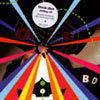 Although it's not a split single, "Smiling Off" is split down themiddle: the first half being the 4/4 dance record and the second beingthefree-form noise-off.
Although it's not a split single, "Smiling Off" is split down themiddle: the first half being the 4/4 dance record and the second beingthefree-form noise-off.The DFA unsurprisingly turn "Smiling Off" into a pumpin' 9 1/2 minutemix, quantizing Black Dice's rhytmic echoes and layering them on top arelentless drum kit that wouldn't sound unfamiliar after listening toan LCD or Juan MacLean 12". It's maintains the somewhat unpredictable theme of the BlackDice original, however, with a myriad of whirring effects from the original plusbird sounds adding even more color. The Vladislav Delay mix adds a deepsynth bass line and like nearly any German remix, sounds much morerigid and mechanical. Vocalizations echoed and looped add a bit of anelement to keep it in the category of "man this is too weird" to playat a Euro trash dance club, however, for any noise fan this mix wouldprobably gently fade into the background. At the nine-minute mark, itprovides an excellent compliment to the DFA's mix. Tusk Drag Force's'ZZ Pot remix' of "Smiling Off" is probably the most free-form take onthe disc. It begins with an aural exploitation of some of the elementsfrom the original, taking the high road and choosing not to add astandard beat on top, then it makes a drastic shift and comes outsounding like "Swamp Rat" from Nurse With Wound! (Somebody's at themixing knobs having fun with dials.) Another shift finds the beatschanging but the twittering remains constant. Over the course of closeto 15 minutes, the song goes through a number of other shifts andmovements, finally incorporating the last movement of the original intothis version. What Tusk Drag Force have accomplished is essentiallymaking an album-side length version of the track.
As a bonus the music video is included as "enhanced content," andit's what would be expected from looking at the cover to the latestBlack Dice releases: a low-budget collage, not "pretty" but colorfuland bright. However, a little warning to the manufacturers and their"disclaimer" that they're not responsible for damaging peoples'computers by means of "enhanced" CD content: you can be (see Title 18 Part 1 Chapter 47 Section 1030: Fraud and related activity in connection with computers).
samples:
Read More
- Administrator
- Albums and Singles
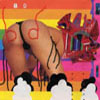 For Black Dice's third full-length LP for DFA, they've almost completely abandoned the tropical sunshine of Creature Comfortsand embraced their family's beat tendencies. It's still Black Dice,however, and the whimsical surrealistic approach to songwriting isstill present, however it's more refined than ever.
For Black Dice's third full-length LP for DFA, they've almost completely abandoned the tropical sunshine of Creature Comfortsand embraced their family's beat tendencies. It's still Black Dice,however, and the whimsical surrealistic approach to songwriting isstill present, however it's more refined than ever.
Beat is the key ingredient on the first couple songs, but it's not ahard-pounding techno floor beat. It's almost a mind-controllingblood-pumping beat that owes a lot to Rough Trade-era Cabaret Voltaire(pre-1983). There's blistering analogue-like sound manipulation, dubbyechoes, live drums, guitar effects and loops, and sweeping electronicsounds, all mixed together in very pleasantly. If my Cabaret Voltairecomparison wasn't enough, "Smiling Off," the album's first single andvideo, will easily find room in anybody's heart who loves CV's classic"Sluggin fer Jesus," for its primitive soul and its bump and shakewriggling beats. As the beats almost become way too comfortable, BlackDice switches gears and the song becomes overcome with low guitarbuzzing and hums and nonlyrical vocalizations. Black Dice find aresting point in the next couple songs, with the serene "HeavyManners," allowing the guitar, vocals, and effects to carry therhythmic pulse throughout the song, and "Aba," short and sweet with apretty synth melody. Another couplet follows, each returning to thedissonant cacophony Black Dice fans and followers have come to expect,both are rhythmic but clouded by a mess of squeals and a roaring noise."Motorcycle" closes the disc with an almost hint to Creature Comfortswith its spritely Carribbean island-like guitar, while the prominentstomp-clap beats, dog bark-like whooping, and gargling sounds make surethat the oddity is still intact.
Don't confuse evolution and refinement with selling out. Black Dicearen't making compromises despite any notions of pressure since theworldwide DFA deal, which includes exclusive manufacturing anddistribution by Astralwerks/Caroline in North America, but they areclearly evolving and embracing more.
samples:
Read More
- Administrator
- Albums and Singles
 Twenty-one of the bigger names in independent music can be and probably have been wrong, but they're spot on with The Now Sound Redesigned,a remix project that can rightly be called an event. The relevant backstory: in the late 1960s and early 1970s, the four Dedrick siblingscreated some beautifully constructed and legitimately awe-inspiringsunshine pop over a five year period. Never garnering commercialsuccess, the Dedricks called it quits in 1972, leaving their creationsto languish in obscurity forever, but for the LPs purchased second-handby vinyl junkies and fanatical crate diggers.
Twenty-one of the bigger names in independent music can be and probably have been wrong, but they're spot on with The Now Sound Redesigned,a remix project that can rightly be called an event. The relevant backstory: in the late 1960s and early 1970s, the four Dedrick siblingscreated some beautifully constructed and legitimately awe-inspiringsunshine pop over a five year period. Never garnering commercialsuccess, the Dedricks called it quits in 1972, leaving their creationsto languish in obscurity forever, but for the LPs purchased second-handby vinyl junkies and fanatical crate diggers.Finding what they heard—soaring melodies, lovely harmonics and cleverarrangements, with top notch production and instrumentation—was amazingin both sonic quality and the fact it was unknown, they all broke thecardinal rule of vinyl digging and shared what they heard. Thepopularity spread slowly but surely until it reached the ears ofSharpshooters and Belle & Sebastian alike. Now, with the FreeDesign catalogue reissued and available on CD, the remix EPs it spawnedare collected and issued here as The Now Sound Redesigned.To wit,most various artists remix collections fall under the category ofirrelevant barely-assed pap. Not so here. The efforts arebilled—correctly—as reinterpretations, with significant changes insound andstructure, sometimes within a track, while retaining strong similarityto the source material.
The new songs are as different as theircreators: Madlib's cut has a signature chopped drum and Yesterday's NewQuintet-esque keyboard loop on top of the 30 year old harmonies;Stereolab offers their own soaring bridges and sunshine-splashed hooksto complement the Dedrick original. MURS nearly tips the boat byplaying the social consciousness card (bummer) but is rescued by DangerMouse's trippy understated backbeat. Other notables on hand includeStones Throw sensei Peanut Butter Wolf—his hand in yet anothermusical archeology project—serving up a high energy Moog-drivensoulride. While any rehashed tune will lack the original's passion anddirection, not one of the 19 tracks feels tired, nor do they want forenergy or purpose. And there's enough sonic variety to please nearlyany conceivable listener, save perhaps the honky-tonk or death metalsets.
All the remixes hold their own, but they pale in comparison tothe original stuff, teases of which serve as interludes. This, morethan anything else speaks to the validity of the album's exercise andthe vitality of the very nearly-forgotten sound. The Free Design Redesignedwill never break any sales records and will be lucky garner significantradio airplay, but it wasn't meant to. Every non-Philistine who plugsinto the Free Design's sounds won't be able to resist the music. If thewell-known names here turn a few more heads onto the Dedricks, all thebetter. Happy crate-digging.
samples:
- Peanut Butter Wolf - Umbrellas
- Stereolab & the High Llams - Harve Daley Mix
- The Free Design - Light My Fire
Read More